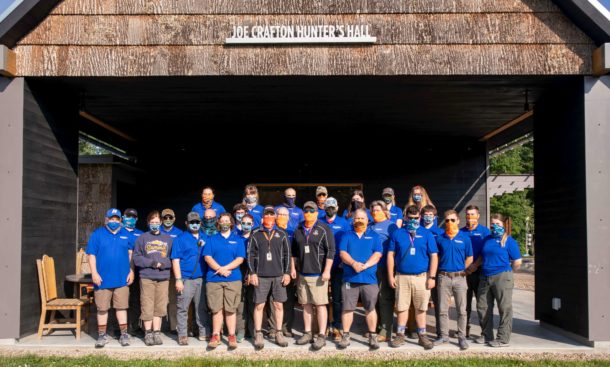BMX bikers say two things about their sport: it’s one of the most dangerous and by far one of the most fun.
The Action Point Extreme Sports staff, keeping that in mind, is working hard to make sure their program reduces the danger as much as possible while ratcheting up the fun. Given that BMX causes more injuries than any other program area at the Jamboree, they’ve got a lot of work on their hands, but they’ve made a lot of progress so far, said Steve Bloberger, assistant manager for Extreme Sports.
To promote safety, the BMX program incorporates a three-step assessment program dubbed “Pre-Ride, Re-Ride, Free-Ride.” During the Pre-Ride stage, you’ll take about ten minutes to get familiar with what the staff calls the “Three Essentials of BMX.” Then you’ll head to Track 1, a small, individual BMX course, and get the feel of the area — Re-Riding the basic track — until staff see you’ve got the knack of it. After you receive a blue stamp (usable at both Action Point and The Trax BMX areas throughout the Jamboree), you’re eligible to Free-Ride, taking on the intermediate, two-rider Track 2 or the advanced, four-rider Track 3. You’ll only need to earn the stamp once, no matter how much experience you come in with.
Although it might seem daunting to learn such a new skill, Bloberger says the only prerequisite for learning BMX at the Jamboree is the ability to ride a bike. He estimates that over a third of new riders need to take a good amount of time during the Re-Ride stage to truly get comfortable with BMX, and it’s okay to take your time.
Wyatt M., a Life Scout from New York, fell within that group. He arrived with no prior BMX experience, but after spending a half hour practicing on Track 1, he felt confident enough to move on to Tracks 2 and 3. Now, Wyatt says he sees BMX as a definite highlight, and he’s looking to come back often throughout Jambo.
The BMX program doesn’t backpedal on safety once the training phase is done. Their Track 3 incorporates 2 additional staffers on the course who can communicate the status of all the riders to the staff members on the platform. In addition, the program is monitored by members of the U.S. Army’s 411th Medical Battalion. Spc. Terry, an Army medic, says that they prepared especially to treat wounds specific to BMX and other adventure programs, but that the injuries they’ve addressed so far have been mostly minor cuts and scrapes.
The balance of fun and safety that BMX incorporates is clearly popular with participants. The staff facilitated over 1,800 rides on Wednesday afternoon alone, and they expect they could get close to 35,000 by the time the Jamboree is through.



